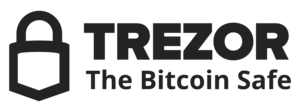The Protocol: Solana’s Firedancer Proposes Uncapping Block Compute-Unit Limit
source: CoinDesk: Bitcoin, Ethereum, Crypto News and Price Data
2025. Oct. 01. 14:41

Welcome to The Protocol, CoinDesk's weekly wrap of the most important stories in cryptocurrency tech development. I’m Margaux Nijkerk, a reporter at CoinDesk.
In this issue:
Firedancer Devs From Jump Crypto Push Solana Toward Bigger BlocksLuke Dashjr Denies Hard Fork Claims as Bitcoin Governance Debate Heats UpUN: Experiment With Pension Funds Proves Blockchain as 'Ultimate' Identity TechGate Rolls Out Token Launcher ‘Gate Fun’ on New Layer-2 NetworkUnknown block type "divider", specify a component for it in the `components.types` optionNetwork News
FIREDANCER DEVS PROPOSE REMOVING BLOCK-LEVEL COMPUTE UNIT LIMIT: In a bold shift for Solana’s scaling roadmap, Jump Crypto’s Firedancer development team has submitted a proposal, known as SIMD-0370, that would remove the block-level compute unit limit. The change, which the team suggested would be implemented following the deployment of the Alpenglow upgrade, could unlock a new regime of throughput by letting block producers have bigger blocks. Under today’s design, each block is bounded by a maximum allowable compute unit, a safety measure and maximum workload meant to stop validators from getting overwhelmed. Currently, the limit on Solana is at 60 million compute-units. Earlier this year, another group of Solana core developers submitted a paper arguing to lift the limit to 100 million compute-units. But with the upcoming Alpenglow upgrade, some developers say that cap is no longer necessary. And if that cap is lifted, blocks would be able to fit as many transactions as they can, depending on how high performing their validators are. Supporters say this flexibility could make Solana more resilient during periods of high demand, such as when new tokens launch or DeFi activity spikes. Bigger blocks would mean more transactions can get through, reducing the kinds of congestion and failed trades that frustrate users. Still, some debated that blocks today on Solana aren't full so there would be no tangible difference for end users. — Margaux Nijkerk Read more.
BITCOIN DEV DOUBLES DOWN ON DENIAL OF HARD FORK: Debates over Bitcoin’s future are nothing new, but this week the discussion took on a sharper edge. One of Bitcoin’s long-serving developers was at the center of a storm about immutability, censorship and what it means to “save” the protocol. The controversy escalated on Sept. 25, following an article published by The Rage claiming to reveal that Luke Dashjr, maintainer of the Bitcoin Knots software, advocated for a hard fork that would install a trusted multisig committee with power to retroactively alter the blockchain, review transactions and remove illicit content. A blockchain hard fork is a permanent divergence from the previous version of the blockchain software, requiring all participants to upgrade to the new protocol because the new and old versions are incompatible. The piece cited purported leaked text messages in which Dashjr allegedly warned: “Either Bitcoin dies or we have to trust someone.” The story spread across X, drawing hundreds of thousands of views and intensifying a long-running philosophical rift: should Bitcoin remain a neutral settlement layer, or should developers actively filter what counts as legitimate use of the network. Dashjr rejected the claims outright. “The truth is I have not proposed a hardfork or anything of the sort, and these bad actors are just grasping at straws to slander me and try to undermine my efforts to save Bitcoin again,” he wrote. The Rage responded with a meme to the effect of demanding to know who sent the leaked messages that its story shared. Dashjr repeated his position multiple times over the following 24 hours. “Nope, nothing changed. Nobody is calling for a hard fork still." he posted. In another reply, he underlined: “There is no hard fork.” — Jamie Crawley Read more.
U.N. DABBLES IN BLOCKCHAIN: The United Nations leaned into blockchain technology to overhaul its own pension system, and a study of that process concluded the innovation is the "ultimate technology for digital identity verification," which has spurred the UN toward extending the system and sharing it with other international groups. The UN — which has explored various blockchain uses over the years — tried it out on their United Nations Joint Staff Pension Fund (UNJSPF), according to a white paper released this week that suggested its use in confirming people's identities can help in security, efficiency and transparency. In cooperation with the Hyperledger Foundation, the UN sought to "improve and secure the UN pension process globally by putting a blockchain-supported digital identification infrastructure into production." The UN pension fund had been working off of a 70-year-old system to identify beneficiaries in 190 countries, relying on a paper-based approach to prove more than 70,000 beneficiaries were who they said they were, still alive and where they claimed to be. It was prone to error and abuse, and resulted in about 1,400 payment suspensions every year, according to the document. So the organization shifted to the blockchain-powered digital certification, beginning with a 2020 pilot program and a 2021 implementation. "The shift away from physical documentation has substantially reduced processing times previously spent on receiving, opening, scanning, and archiving paper documents," the paper said. — Jesse Hamilton Read more.
GATE ROLLS OUT TOKEN LAUNCHER: Crypto exchange Gate unveiled Gate Fun, an on-chain platform that allows users to issue and trade tokens without coding. The platform runs on Gate Layer, the company’s recently launched layer-2 network built on the OP Stack. Gate claims users can create tokens in under a minute by paying a small gas fee in GT, the network’s native token. Similar to popular token launcher Pump.fun, token parameters such as name, symbol, and initial purchase options can be customized through a one-click interface. Gate Fun is accessible both via Web3 wallets like MetaMask and Gate’s own account system. Tokens launched on the platform can be traded across multiple Gate products, including Gate Alpha, Meme Go and Swap. – Oliver Knight Read more.
Unknown block type "divider", specify a component for it in the `components.types` option




